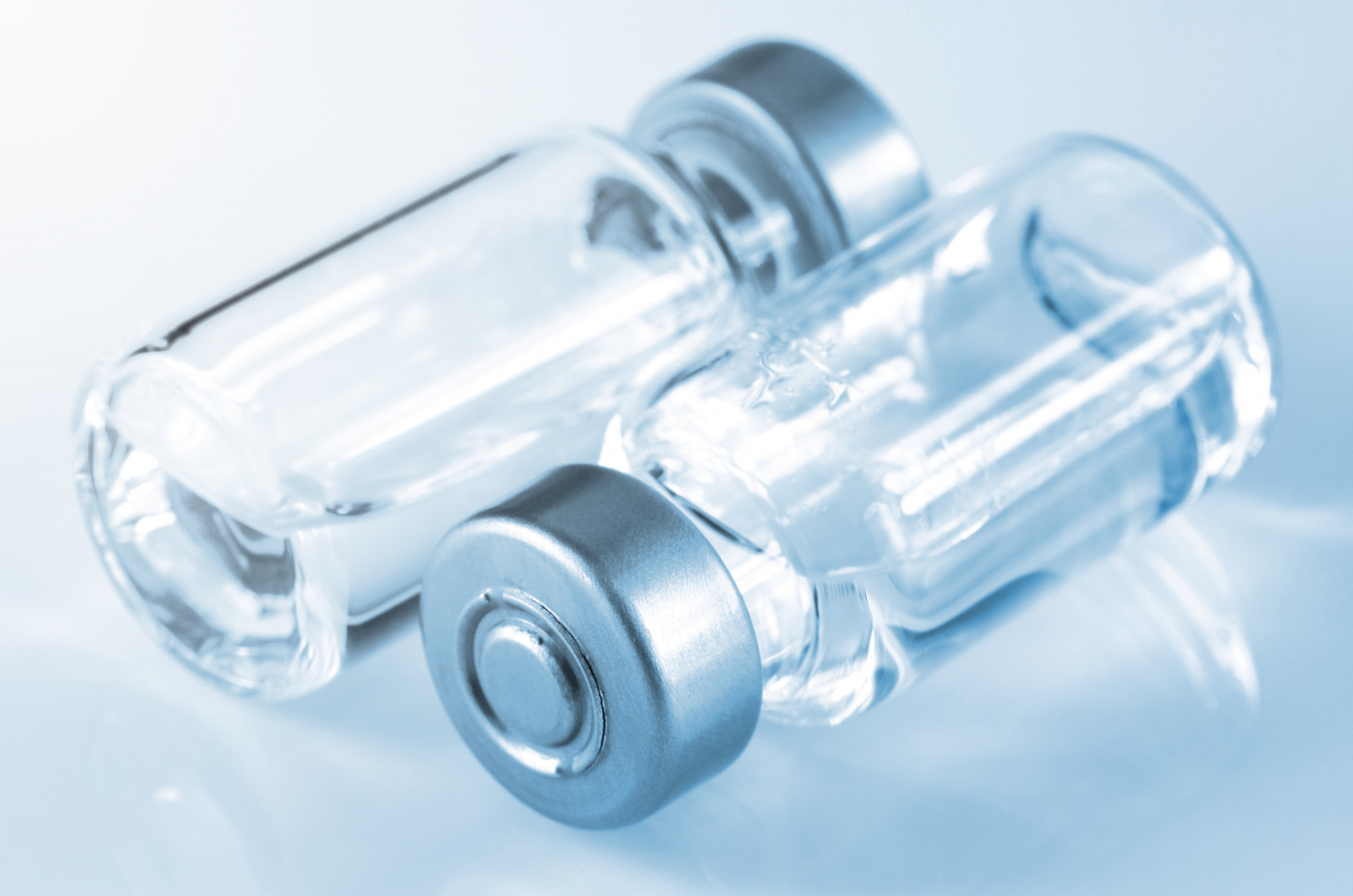#ECTRIMS2019 – Is Rituximab a Reasonable Option for MS Patients? No, Researcher Says
Written by |

Editor’s note: This is the third story in a three-part report examining the question, “Is rituximab a reasonable alternative treatment for MS?”, which was a topic discussed at this year’s Congress of the European Committee for Treatment and Research in Multiple Sclerosis (ECTRIMS). Here, we take an in-depth look at the arguments presented against rituximab as a therapeutic option.
***
Is rituximab a reasonable alternative treatment for multiple sclerosis (MS)?
Mitchell Wallin, MD, MPH, a neurologist and professor at George Washington University and the University of Maryland, says no, explaining in his presentation at ECTRIMS why he believes rituximab is not a reasonable alternative for the treatment of MS.
Wallin, who is also the director of the Veterans Affairs’ MS Center of Excellence-East, wrote an article last year titled “Rituximab is an acceptable alternative to ocrelizumab for treating multiple sclerosis – No.”
“My views are probably not as extreme as my title would suggest,” he said. “I’m gonna highlight four areas in why I think ocrelizumab [Ocrevus] is a better choice as a B-cell therapy for MS — mechanism of action, efficacy, safety, and cost.”
Mechanism of action
Rituximab was “the first CD20 antibody that was produced for patient care,” Wallin said. It is a mouse chimeric monoclonal antibody, composed of both mouse and human parts, while Ocrevus and ofatumumab (under investigation for MS), are second-generation anti-CD20 antibodies that are mostly or fully made of human protein.
The fact that Ocrevus has fewer non-human parts may reduce the chance that patients develop antibodies against the medicine, known as anti-drug antibodies, which decrease a treatment’s effectiveness over time.
Wallin also pointed out that while rituximab and Ocrevus bind overlapping regions of the CD20 protein in immune B-cells, the target regions are “similar but not the same.” Different antibodies adopt different shapes, which can change how efficiently they can eliminate B-cells.
One of the drawbacks of rituximab is that “it is very immunogenic [capable of triggering an immune response].” This causes “a great deal of infusion-reactions … and anti-drug antibodies,” Wallin said.
Furthermore, rituximab and Ocrevus mostly use different pathways to induced B-cell elimination. Ocrevus has a stronger affinity for binding CD20, and works preferentially through a direct, potentially more controlled antibody-directed cell-killing, as opposed to an indirect, complement-directed pathway (complement is a part of the immune system that plays a crucial role in innate defense mechanisms).
Efficacy
Wallin highlighted several important studies that “brought rituximab on the map,” demonstrating its effectiveness in relapsing-remitting MS (RRMS) patients.
An open-label Phase 1 trial with RRMS patients showed a significant decline in magnetic resonance imaging (MRI) lesions and relapse rates (86% reduction) in 26 patients treated with rituximab for 72 weeks.
A larger, controlled Phase 2 trial of 104 patients with RRMS, called HERMES (NCT00097188), also showed “a significant decline in MRI data, and also in the relapse rate by 50%” in rituximab-treated patients, compared with placebo, following 48 weeks of treatment.
Two major studies based on the Swedish MS registry showed that rituximab was more effective than other commonly used first-line disease-modifying treatments (DMTs). It reduced relapse rates by 87%, compared with injectable therapies — interferons (brand names Avonex, Rebif, among others) and glatiramer acetate (brand names Copaxone, Glatopa, also available as a generic).
Lower rates of relapses also were noted compared with Tecfidera (dimethyl fumarate), with a non-significant tendency favoring rituximab versus Gilenya (fingolimod) and Tysabri (natalizumab).
Recently, a pooled analysis of 15 rituximab studies in RRMS patients confirmed that “overall annualized relapse rates were reduced with rituximab,” and the treatment also eased disability, decreasing patients’ Expanded Disability Status Scale (EDSS) score by 0.46.
As for Ocrevus, data from relapsing MS patients enrolled in the OPERA I and OPERA II trials (NCT01247324 and NCT01412333), which involved a total of 1,656 patients, showed that Ocrevus reduced annualized relapse rates by 46%, compared with Rebif (interferon beta-1a), after 96 weeks of treatment.
“There was a significant MRI outcomes reduction,” with 95% fewer contrast-enhancing lesions and a 30% lower risk of disability progression, Wallin said.
“Overall, the efficacy data shows more robust data for ocrelizumab [Ocrevus] largely based on larger power and randomized comparator studies, indicating efficacy in relapsing disease,” he added.
Regarding primary progressive MS (PPMS), in particular, rituximab was evaluated in PPMS patients in the OLYMPUS trial (NCT00087529), where 439 patients were randomized to rituximab or placebo infusions over 96 weeks. The primary objective, a significant benefit in terms of disability progression, was not met.
“However, there was a delay in progression in a sub-analysis in patients who were less than 51 years, and in those who had contrast-enhancing lesions [active lesions]” at the study start, Wallin said.
In addition, an observational study of a mixed group of 822 MS patients showed that rituximab was “associated with very low relapse rates, and only one point increase in EDSS over 29 months,” he said.
Ocrevus’ efficacy for PPMS was shown in the Phase 3 ORATORIO trial (NCT01194570). The main objective was achieved, with the risk of confirmed disability progression being 25% lower with Ocrevus treatment than with placebo.
There was also a benefit in MRI lesion load, with a total volume of T2 lesions of 3.4% in the Ocrevus group, compared with 7.4% in the placebo group. Ocrevus also lowered brain atrophy.
A post-hoc analysis of Ocrevus’ ORATORIO data focused on a new outcome called NEPAD (no evidence of disability progression or active disease), measured by a composite of relapse incidence, EDSS scores, tests for walking and hand/arm function, and MRI outcomes.
“In that composite, three times as many patients in ocrelizumab [Ocrevus] met [NEPAD status], as compared with placebo,” Wallin said.
Overall, he thinks these data on Ocrevus are “very robust for progressive MS,” and its benefits seem “very durable” for up to six years.
Safety
Safety is “obviously a critical issue when picking a DMT,” Wallin said.
Infusions reactions are the most common side effect for both rituximab and Ocrevus. With rituximab, most of these reactions “are mild, but up to 78% of the patients had an infusion reaction” in the Phase 2 HERMES trial, according to Wallin.
Another concern is the development of anti-drug antibodies, which may compromise the treatment’s effectiveness in the long term.
In a group of 339 MS patients treated with rituximab in Sweden, 33.9% were seen to have anti-drug antibodies. “These may pose a risk for incomplete B-cell destruction,” and “may be responsible for treatment failure” in some patients, Wallin said.
Regarding cancer risk, there “doesn’t appear to be malignancy risk associated with rituximab, as highlighted by recent data,” Wallin said.
For Ocrevus, “infusion reactions are the most common side effect,” being mild in 31–40% of the cases and severe in fewer than 1%. Importantly, in Ocrevus-treated patients, there were lower rates of anti-drug antibodies — 0.4% in OPERA I, and 1.9% in OPERA II trials.
Cancer risk “was higher in the ocrelizumab arm [Ocrevus-treated group]” Wallin said. In the two OPERA trials (with relapsing MS patients), cancer risk was 0.28 vs 0.14 per 100 person-years in Ocrevus versus Rebif-treated patients. The risk of malignancy in the ORATORIO trial (PPMS patients) was 0.93 versus 0.27, in the Ocrevus vs. placebo groups. (Here, the rate of cancer per 100 person-years means the number of people with cancer that would appear if you followed 100 patients for one year.)
Updated data looking at all patients exposed to Ocrevus in Phase 2 and Phase 3 trials and observational studies until July 2018, shows that, in Ocrevus-treated patients, “the risk for cancer is within the realm of … epidemiological trials,” Wallin said.
Findings from the study also showed that, over time, the window for risk is stable.
“Infections are the other common side effect” for both rituximab and Ocrevus. Respiratory infections are the most common, “roughly 10%,” according to Wallin. Hepatitis and hepatitis B reactivation have been reported for both therapies.
Progressive multifocal leukoencephalopathy (PML) — a dangerous viral infection of the brain associated with some MS treatments — is unknown for rituximab users. Based on data from non-MS patients using rituximab, the PML risk is estimated to be 1 in 30,000 people.
For Ocrevus, there have been seven cases of PML in Ocrevus trials out of a total population of 100,000 patients. “These are cases that are carryover with [prior] exposure to both natalizumab [Tysabri] or fingolimod [Gilenya],” Wallin said.
Another safety concern is that treatment with B-cell-targeted therapies includes a risk of decreasing the levels of antibodies (immunoglobulins or Ig), which are produced by B-cells. This decrease in antibodies could increase a person’s risk of serious infections.
Lower IgG levels (the most abundant type of antibody in the human body) are a problem for both rituximab and Ocrevus, reported in 3% of MS patients using rituximab, and 1.5% in relapsing patients and 1.1% in PPMS patients using Ocrevus.
Serious infections “are a real problem,” Wallin said. The combined data of Ocrevus Phase 3 trials and extension studies revealed that “in general, there is a slight increase over time in PPMS [patients] with severe infections. Some are worrisome,” he said, whereas for relapsing patients, serious infections remain as common as in placebo groups.
Cost
“The increase in DMT cost over the last two decades in the United States is rather staggering,” Wallin said. “The backdrop is the increasing cost of out-of-pocket expenses for patients.”
A recent study revealed that “over a 12-year period, the out-of-pocket cost for a DMT in the U.S. went from $15 to over $300. So, in terms of cost, there is no argument. Rituximab is six-fold to three-fold [$10,000–$20,000 per year] less expensive than ocrelizumab [Ocrevus; $65,000 per year],” Wallin noted.
Regarding infusion costs, these are “similar, depending on how the protocol is done,” he said.
“There is a variable amount of patient support for covering costs for people who don’t have health insurance in the United States, or new co-pay assistance,” Wallin said.
In summary, based on the data, Wallin emphasized that Ocrevus “is a better choice in terms of mechanism of action and efficacy.” It is more efficient in B-cell depletion and less likely to produce anti-drug antibodies.
“Both drugs show robust efficacy in RRMS, but the controlled data is stronger for Ocrevus,” he said. Efficacy data for PPMS is more compelling for Ocrevus as well, he added.
“The safety data brings up issues for both drugs. I’m most concerned about the infection data,” he said.
“Cost favors rituximab,” but availability may be limited by FDA approvals, “and also by where you are in the county’s approval process,” Wallin said.
Cost and availability “are critical issues that trump all other variables, so we have to be pragmatic when we sit in front of the patient and look to see how we can get them on the best drug,” he concluded.
To read the other side of the rituximab debate presented at ECTRIMS, go here.





